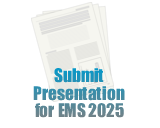 Analysis of Perfluoroalkyl and Polyfluoroalkyl Substances in Drinking Water: Validation Studies of EPA Method 537.1 Using the StayClean™ Ion Source QSight LC-MS/MS
Analysis of Perfluoroalkyl and Polyfluoroalkyl Substances in Drinking Water: Validation Studies of EPA Method 537.1 Using the StayClean™ Ion Source QSight LC-MS/MSDrinking Water
Oral Presentation
Prepared by S. CAI1, J. Wu2, T. Hey2, A. Payne1, N. Kennedy1
1 - PerkinElmer, 710 Bridgeport Ave, Shelton, CT, 06484, United States
2 - PerkinElmer Canada, 501 Rowntree Dairy Rd, # 6, Woodbridge, ON, L4L 8H1, Canada
Contact Information: [email protected]; 951-258-2470
ABSTRACT
This work focuses on the validation of EPA Method 537.1 for analysis of PFAS in drinking water, as well as the development of an improved version of this methodology using the PerkinElmer QSight® 220 UHPLC-MS/MS system. The validation studies demonstrate that excellent linearity was achieved for all PFAS analytes and surrogates, with the R2 values ≥0.996. An improved chromatographic method has been developed to decrease LC-MS/MS runtimes to 10 minutes, as compared to the method described in EPA Method 537.1 with a runtime of 37 minutes; a 73% reduction in runtime. The chromatographic method was established to meet peak symmetry requirements and the baseline separation of linear and branched chain isomers of selected analytes. MRM experiments were optimized for all analytes, surrogates and internal standards. A time-managed MRM method has been optimized to maximize dwell time for improved sensitivity, while maintaining >10 data points across each chromatographic peak. Recoveries for LFBs fortified at the very low conc. of 0.3 ng/mL ranged from 77% to 119% while recoveries for LFBs fortified at 4, 16 and 80 ng/mL ranged from 92% to 117%. EPA method requires that recoveries fall within 70-130% so the recoveries in this study are well within these requirements demonstrating the excellent performance of the sample preparation procedure. In addition, the experimentally determined LCMRLs are at or even well below those reported in the method further supporting the excellent method performance. The SPE extraction was carried out on a manual SPE manifold system that was modified to eliminate any components constructed of PTFE to minimize or eliminate PFAS contamination. Municipal drinking water samples from three sampling sites were quantified with validated recoveries and repeatability within the method requirements. Surrogate standard recoveries in field samples validated the effectiveness of the sample preparation method. Overall, this validation study shows that QSight 220 LC-MS/MS is an excellent system for the application of EPA Method 537.1 with ample sensitivity to measure all analytes.

